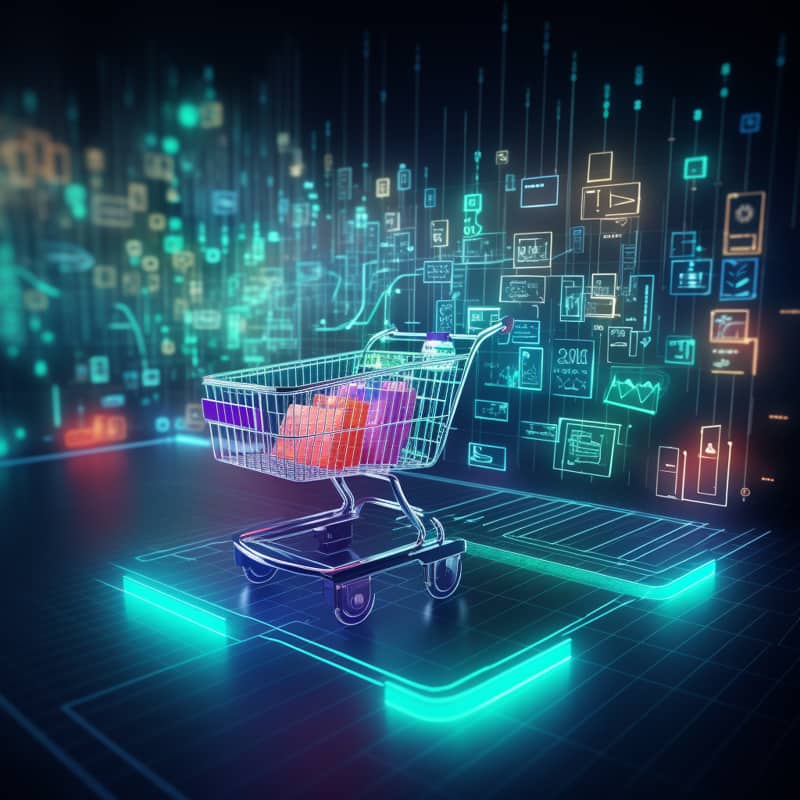SAP IS Retail Interview Questions and Answers
Retailers can enhance performance and profitability using these solutions, which provide capabilities such as inventory, sales and customer data management.
With SAP IS Retail’s innovative and cutting-edge technology, stores can enhance customer service delivery while streamlining operations and optimising supply chains.

1. What is replenishment planning in the retail business?
Replenishment planning is an integral component of retail businesses that ensures merchandise shipments arrive on schedule to stores, inventory never runs dry, and inventory shortages do not arise.
2. Why is transportation planning important in replenishment planning?
Transportation planning is crucial to replenishment planning as it helps optimise transport costs while guaranteeing full truck loads to minimise company losses.
3. How does replenishment planning connect to external factors such as transportation?
Replenishment planning involves external factors like transportation, and stores may request replenishment when their supplies become depleted or exhausted, necessitating DCs to deliver these orders quickly and reliably.
4. What drives replenishment planning from a business perspective?
Different forms of business logic can drive replenishment planning; each company may develop its tailored replenishment approach for itself, and companies can use logic or algorithms explicitly tailored to optimise replenishment strategies and practices when looking to optimise replenishment processes.
5. How can companies optimise the replenishment process?
Companies can optimise replenishment by developing logic and algorithms and customising approaches specifically to business requirements by business needs.
6. What is the pull process in requirement planning?
Pull means raising orders or providing supplies directly to sites beforea store order; it is often employed when setting inventory requirements for an entire season and planning how many products to sell at each location.
7. What are forecasting and replenishment in retail?
Forecasting and replenishment systems utilise advanced algorithms specifically tailored to retail, and they work as distinct units that work seamlessly together to perform replenishment quickly, reliably, and precisely.
8. How is forecasting integrated into the replenishment system in retail?
Forecasting is not part of retail’s replenishment system but must still be handled independently due to other influencing factors, including calendar days, global event management, trade management, and historical values gathered directly from point-of-sale data feed into forecast systems.
9. What are the three types of total planning with forecasts in retail?
Automatic reorder point planning, time phase planning and regular replenishment.
10. What is the essential factor in determining future requirements in retail?
Forecasts are essential tools in establishing future retail requirements.
11. What are the sources of data for forecasting in SAP?
Databases used for forecasting include goods issues, alternative historical data and technical details in SAP, and technical information from the NVR table; in contrast, the WHT table contains alternative historical data sourced by Bosses from external systems.
12. What is forecasting in business operations?
Forecasting is integral to operations management, including calculating and controlling stock levels online or via background processes.
13. How can businesses prioritise stores in real-time scenarios?
Businesses may organise the stores based on their needs and preferences as top priority stores, then focus on meeting all requirements from essential ones before moving on to others.
14. What is essential in focusing on the highest priority stores in business operations?
Focusing on stores with the highest priority and meeting their requirements enables more accurate and efficient forecasting, smooth operations and reduced deviations in the forecasting process.

SAP IS Retail Training

Time phase planning is another form of inventory management planning used for efficient inventory control, in which order and delivery dates are scheduled with specific delivery days in mind.
16. What is automatic PO?
Automatic PO is based on automatic conversion from Purchase Requisition to Purchase Order, replacing requisitions as they expire, with control parameters configured by configuration files.
17. What role does the POS system play in IaaS retail?
A point-of-sale system ensures that all aspects of retail management are handled effectively and efficiently.
18. What are the three main objects in IaaS retail processes?
It is immunity against IaaS retail processes; therefore, they remain fundamental master data that should remain active throughout any IaaS Retail processes implementation process implementation or management.
19. What are Assortments in IaaS retail?
In IaaS retail, assortments determine which materials must be available in specific stores and distribution networks; varieties may be generated via various means to produce diversity that can be managed efficiently.
20. What are the different types of promotions available in the system?
The system features various promotions that may be applied during specific seasons and methods, even providing opportunities to use multiple promotional strategies simultaneously.
21. What is the material flow in the retail system?
A typical material flow in retail systems entails creating new materials assigned to specific distribution chains or stores before reaching POS with all necessary details for capture by this end and subsequent return into the ERP system.
22. What happens when the POS system receives information from the ERP system?
Once information from an ERP system reaches the POS system, it relays this back to Car, informing it which articles have sold today and require replenishment by tomorrow for sale; each store typically houses four to five POS points that display this message when entering an establishment.
23. How does the distribution chain work in SAP?
SAP retail operations depend heavily on distribution chains to distribute products and services throughout various nations.
24. What is the definition of assortment in the distribution chain process?
Assortment refers to selecting goods available for retail sale by an outlet store based on distribution channel and location considerations.
25. How does the distribution chain help retailers manage their operations?
Distribution chains help retailers manage their operations by selecting products for sale at different stores, managing pricing information and currency transactions, and guaranteeing smooth retail operations.
26. What is the difference between single and multiple distribution chains?
A single distribution chain covers only one country, while multiple chains serve different countries.
27. What is the combination of sales organisation and distribution channel?
Distribution chains are composed of sales organisation and distribution channels combined.
28. How does the material controller process play a role in understanding the organisation’s structure?
The material controller process is integral to understanding an organisation’s structure, from stores and distribution centres through online or third-party sales platforms and third-party marketplaces.

SAP IS Retail Online Training

Plant-to-company codes always correlate, while company code always corresponds with general accounts.
30. What determines the specific place of a plant in SAP?
A store can only operate within its respective transactional or currency code and thus belong exclusively to one company code.
31. How are inventories managed in a specific plant in SAP?
An inventory management profile provides insight into how inventories may be managed at individual plants in SAP, and some organisations manage stocks via material groups, hierarchy levels or materials levels.
32. What is the purpose of understanding the sales or retail price in the configurations for a plant store in SAP?
Comprehending these concepts is paramount when developing more in-depth ideas of how organisations should manage stores.
33. What is the difference between listing and assortment in SAP ERP?
While both listings and assortments mean the same thing in SAP ERP, each may refer to separate processes in its system.
34. What is the function of the listing procedure in SAP ERP?
SAP ERP’s Listing Procedure allows for configuring and assigningstandard and customised options. In addition, assortment options and subsequent listing are part of this function.
35. What are the three possible options for subsequent listing?
There are three choices regarding subsequent listings, no subsequent error processing, permitting further listings or making a manual decisionwhen listing materials previously available at a particular store once more.
36. What is the significance of the supply region in SAP ERP?
SAP ERP’s supply region feature only holds a little information regarding specific supply regions or details; hence, it does not warrant as much consideration regarding supply regions and segments.
37. What is the role of the source list in SAP ERP?
SAP ERP’s source list plays no significant role, as its workflow differs significantly from a normal MM process and deals with first-time configuration of reference stores instead.
38. What is the role of pause in SAP ERP?
Pausing is used in SAP ERP to specify what currencies can be accepted at each store; therefore, it must be managed carefully for accurate set-up information and currency acceptance profiles.
39.What is the role of landscape on blocks in SAP ERP?
Landscape on Blocks in SAP ERP covers store layout topics like store area and how space is defined within its system.

Take this multiple-choice quiz to test how well you understand this material.
40. Which of the following is NOT affecting the retail industry’s replenishment planning process?
Transportation costs
Inventory levels
Store location
Customer demand
41. What is the automatic process of supplying merchandise at the site level in requirement or replenishment planning?
Raising orders or supplying to sites based on forecast values
Monitoring stocks inside and triggering requirements without manual intervention
Planning requirements for the entire season and deciding on the quantities to sell
Making garments and shipping them
42. What is essential in determining future requirements for total planning with forecast?
Dynamic target stock
Static target stock
Non-aggregated data
Customer demand
43. What is an essential prerequisite for forecasting in SAP?
Previous sales values
Consumption values
Replenishment type
Inventory levels
44. What is the recommended mode for forecasting if the minimum stock is maintained?
Online mode
Background mode
Real-time mode
Custom logic mode

SAP IS Retail Course Price


Srujana
Author